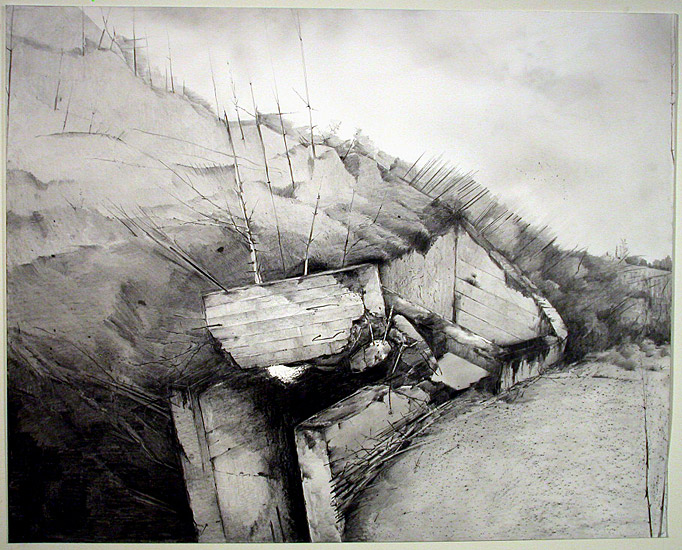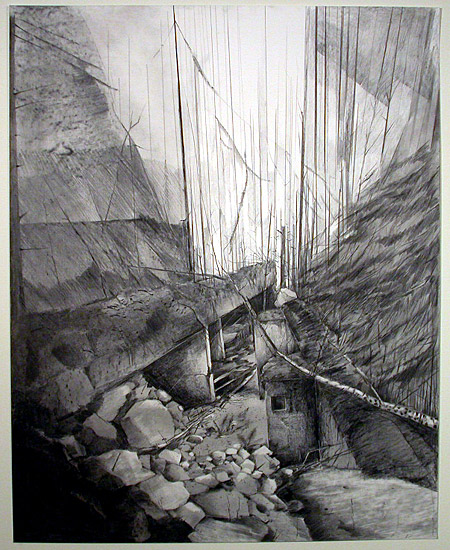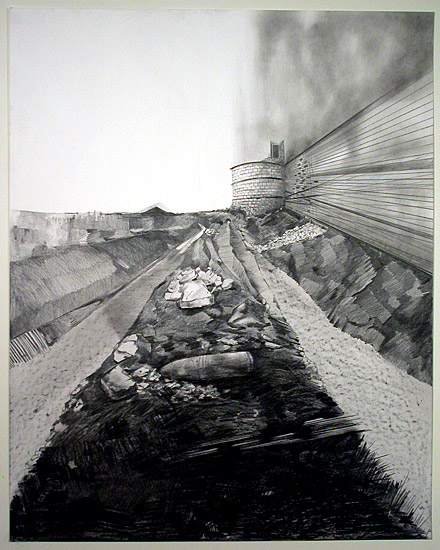Cutting Edge
The bunkers once stood as the human attempt to introduce a type of safety and bulwark against hostile, brutal change, mayhem and terror. As they fall into the earth and the wars they witnessed fade from living memory, nature creeps in to heal the scars.
The Cutting Edge drawings are inspired by images of bunkers left behind after wars for nature to reclaim. Many of these can be found in the woods on the Finnish and Russian border on the lands where the Winter War of 1939-1940, but some of them can be found on the American eastern and western coasts where they were build in anticipation of invasion in World War II. Whether these bunkers were used for protection or whether they stood unused in anticipation of armed invaders, they are now being reclaimed by nature as they crumble into the surrounding landscape.
While the Winter War lasted only 105 days, it was tragic and futile. Revised estimates of the number of dead are close to 100,000 thousand, but may have been much higher. The Red Army and the League of Nations were humiliated and Finland ceded 11% of their territory to the Soviet Union. Perhaps most tragically, the powerlessness of the international community in the face of Soviet demands and actions along with the disorganization with which the war was fought may have emboldened Hitler and encouraged his belief that his army could attack and subdue the USSR.
The drawings in this Cutting Edge series portray the violence and savagery which was inherent in the era. These bunkers once stood as the human attempt to introduce a type of safety and bulwark against hostile, brutal change, mayhem and terror. As they fall into the earth and the wars they witnessed fade from living memory, nature creeps in to heal the scars.









